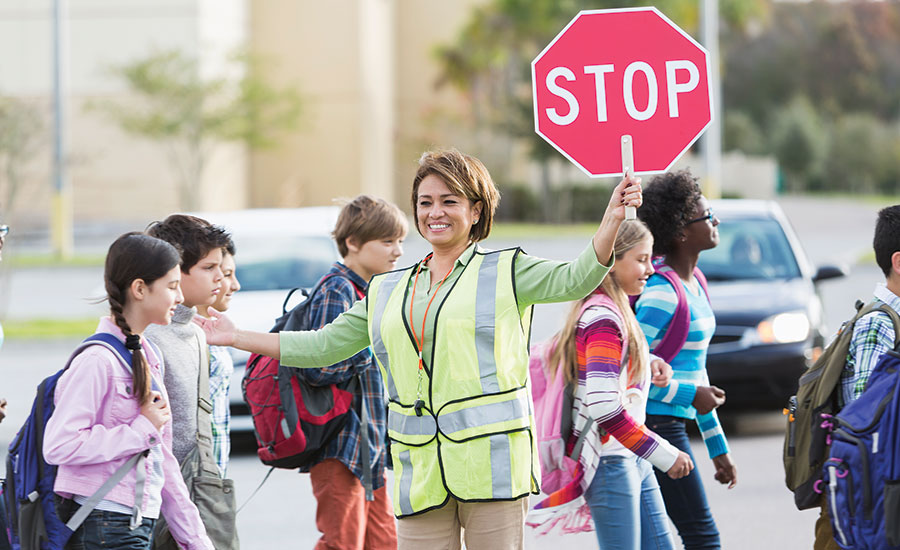Why Flexible School Safety Technologies are Important – Especially Now

The current pandemic has thrown the idea of school safety on its head. While teachers and administrators were preparing for physical threats, such as bullying or active shooter scenarios, they, like the rest of the country, were caught off guard by an invisible one.
Yet, as some schools begin to reopen and others start planning for next year, student and staff safety need to remain top of mind, and administrators need the right solutions in place to keep risks of all kinds at bay. However, these solutions must be flexible and able to adapt to changing circumstances, while still executing clear communication and quick response to reduce school safety risks.
In addition to needing to prepare to hold classes while still protecting their students from the coronavirus, other threats, such as mass shootings, drugs or medical incidents, still exist – and budgets have not multiplied. Schools must remain diligent against all these threats, and choose a safety solution that can meet all or most of the school’s needs.
Simply having a safety solution in place can offer peace of mind, but the right technology investments should be flexible enough to handle dangerous threats and day to day incidents, making them invaluable tools for schools and communities. Here are two examples of flexible technologies that often go above and beyond their original purposes, and can continue to help schools as they begin to reopen.
Anonymous Tip Apps
While an anonymous tip app may seem like a tool that serves a single purpose, it can truly make a difference in a school community. A report by the Secret Service National Threat Assessment Center revealed that 84 percent of attackers in school shootings share their plans to commit violence with at least one other person ahead of time, which means in many cases there’s the opportunity for officials to proactively intervene before it’s too late. In these circumstances, anonymous tip lines allow students who may possess critical information to report threats of violence without fear of identification from their peers (which may otherwise inhibit them from saying something).
However, those who use this tool have often seen benefits beyond reporting school safety threats. According to a recent NBC report, most tip lines that were put in place to prevent school shootings have been used more frequently to report self-harm and suicide threats. In fact, the report reveals that threats of violence against schools tend to be the least reported kind of tip.
Beyond immediate safety threats, tip lines can give community and school administrators valuable insights into other harmful situations. In terms of the pandemic, tip lines can be used to notify administrators of any large gatherings on school property, allowing officials to dismiss these groups or require participants to undergo quarantine before physically returning to class. Other incidents that may also go unnoticed, such as bullying, drug use, sexual harassment or hazing, can also be brought to administrators’ attention via anonymous tip lines. By providing officials with information on these issues, schools can address them appropriately and ensure a better, safer learning environment.
Panic Button Applications
When schools consider safety technology, they need to evaluate options that address all types of emergencies, rather than those used for just coronavirus or just active assailants. The tools must also deliver clear, quick communication and expedite response – two key factors in ensuring better outcomes when emergencies occur, no matter what the incident may be.
This is where panic button apps and school safety suites have a leg up on other standalone solutions. While extremely valuable in active assailant scenarios, panic buttons can act as a real difference maker in saving students’ lives in any given emergency, giving administrators the flexibility needed to address multiple scenarios with one tool. In critical situations where time is of the essence – for example, a medical emergency – school administrators would then be able to activate a response to give dispatchers their exact location and, in some cases, information on what type of emergency they should expect, all with the press of a button.
While a variety of panic buttons exist, schools looking to maximize the effectiveness of their investment should opt for a digital or mobile panic button as opposed to a stationary panic button. While stationary panic buttons were at one time helpful, they are often placed in just one area, and generally alert a third-party alarm company that there is some sort of “panic” event without providing details like who is in need of assistance and the type of emergency. Even more dangerous, because these alarms don’t go directly to 9-1-1, major delays can occur when responding to emergencies. Turning to other options, such as an app-based button that can be brought with teachers and administrators to lunchrooms, hallways or recess, makes the button more practical for everyday use.
Many app-based solutions also offer the added ability for staff to communicate with each other without calling 9-1-1 for help, allowing administrators to communicate quickly with teachers and staff and conduct virtual health check-ins to ensure staff are in good health upon returning to school. Staff based communication and virtual check-ins including “health checks” will be especially important to protecting staff and students in the new normal.
It can be challenging deciding which school safety technology to invest in, especially now. To maximize community safety investments and prepare for reopening, administrators must think beyond the current pandemic and look towards technologies that offer multiple invaluable functions – like anonymous tip lines or panic button applications – to prevent violence and create safer environments for students.
Looking for a reprint of this article?
From high-res PDFs to custom plaques, order your copy today!






